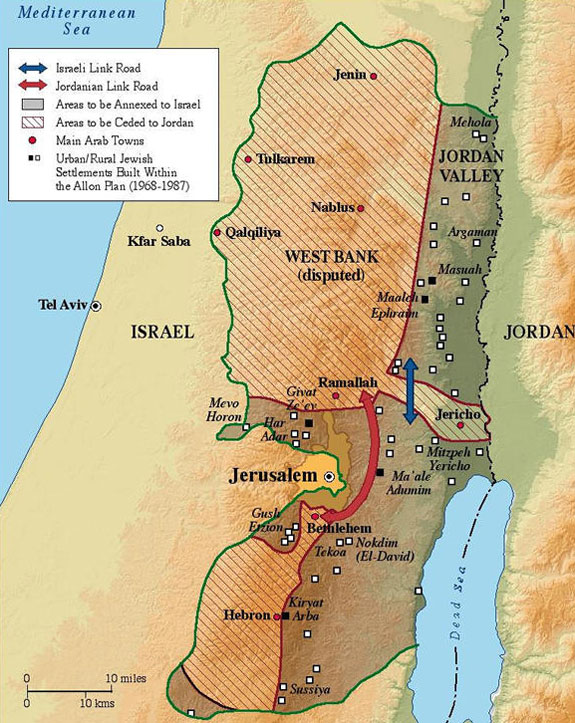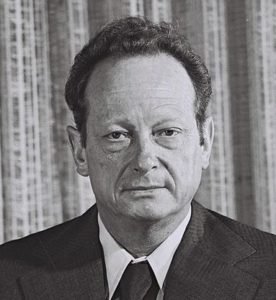
(26 July 1967)
Alon, Yigal. “The Alon Plan.” International Documents on Palestine, 1967. Ed. Fuad A. Jabber. Beirut: Institute on Palestine Studies, 1972. 323-
8. Print. Rpt. of The Alon Plan. Jerusalem: n.p., 1967.
The plan, conceived by the Minister of Labor Yigal Alon, was presented to then-Prime Minister Levi Eshkol on July 26, 1967, immediately following the Six Day War. The Alon Plan was variously amended by subsequent governments and adopted as part of future coalition and party agreements. The plan reflected a response to Israel’s strategic vulnerability from its eastern border with Jordan. Before the 1967 War, Israel was 17 km wide; after the war it was 65km wide from the Mediterranean Sea to the Jordan River. Over the years Israel has sought to control the West Bank area so that it would not become a territorial launching pad for attacks against Israel’s population centers in Jerusalem and in the coastal plain. In negotiations with Jordan, the PLO, and the international community since, Israel has sought security measures to assure the area’s permanent demilitarization, including the use of settlements to achieve that objective. Alon’s plan also called for Israel to retain its Jewish majority while in control of the area, and to provide for an “independent national life/existence for the Palestinian people.”
– Ken Stein, January 2016
The Basic Premises of the Plan
- Peace with the Arab states and the Palestinians is possible and essential. Gone is the period in which a lack of an agreement or continued hostilities can be beneficial to either side.
- The geo-strategic integrity of Eretz Israel will be preserved and it will allow the marking of borders that would provide Israel with security and prevent future wars.
- From a demographic standpoint a Jewish majority will be kept/maintained which would allow Israel to exist as a Democratic Jewish state, based on the principles of the Zionist vision.
- The Palestinian People will be given the opportunity to realize an independent national life/existence without threatening the security of the State of Israel. It will provide them with the option to establish political relations with Jordan and/or the State of Israel.
The Proposed Arrangements on the Basis of the “Green Line”
- The Eastern border of Israel will be the Jordan River and the line that divides the length of the “Dead Sea” that continues along the (British) Mandatory border along the Arava.
- An area which would be 15 Kilometers wide, west of the Jordan River will be annexed to the State of Israel and will become an integral part of her. In the Judean Desert Region, including Kiryat Arba, the width of the area will be increased to 25 Kilometers and it will serve as a link between the Negev and the Jordan Valley.
- In the Jericho Region there will be a corridor between the East(ern) Bank of the Jordan River and the West(ern) Bank.
- There will be a passage between Judea and Samaria and the Gaza District/Region that will provide connectivity for the populations in both sections and free passage to the Port of Gaza.
- The Jerusalem area as a whole will be annexed to the State of Israel.
- With regards to the areas in Judea, Samaria and Gaza that are heavily populated by Arabs, Israel will negotiate with the inhabitants and the Arab states the preferable system of government that would be implemented there.
- As for the rest of the borders only essential changes will be made.

